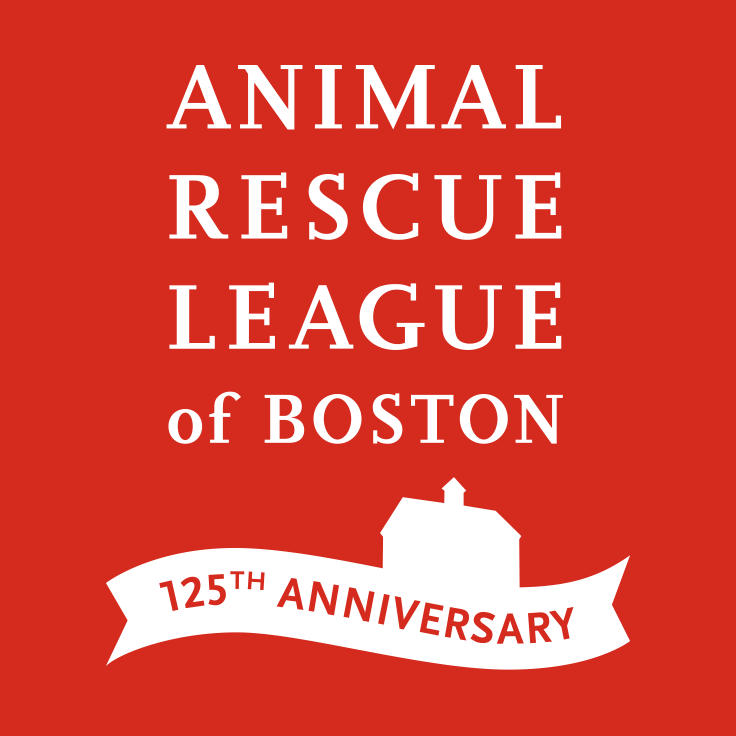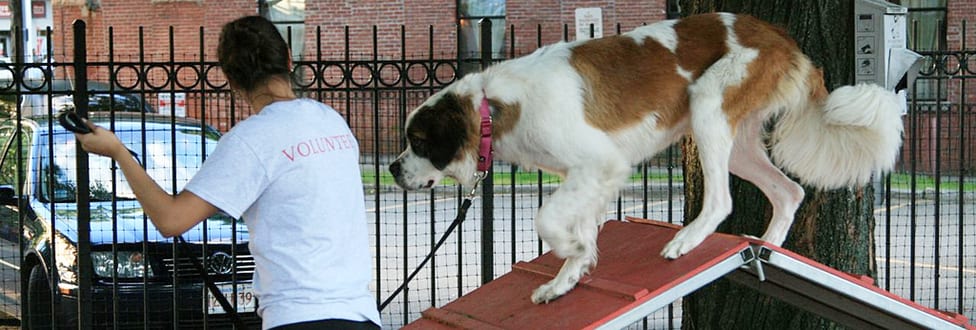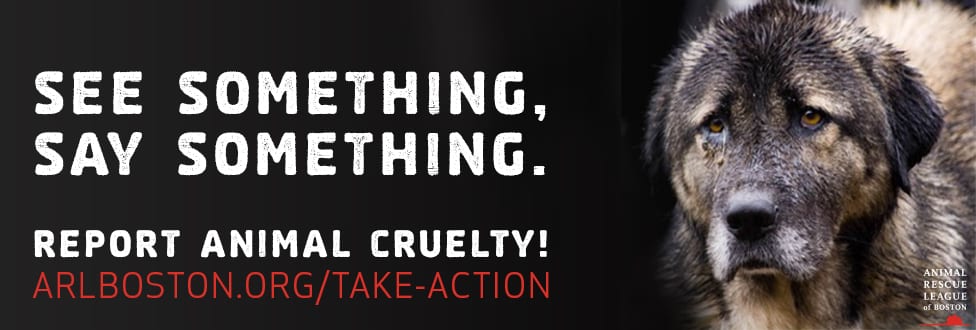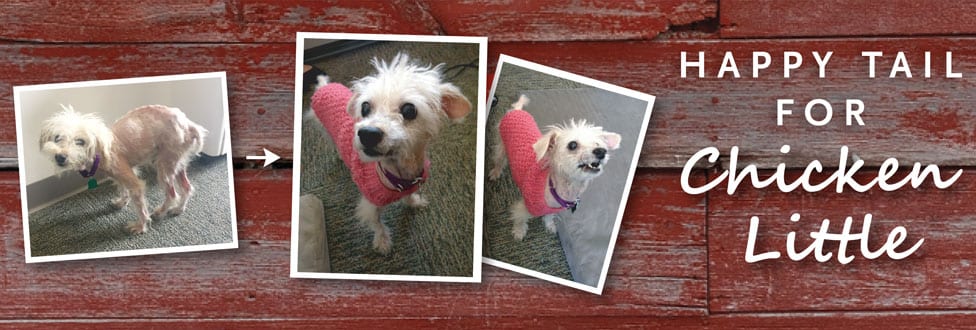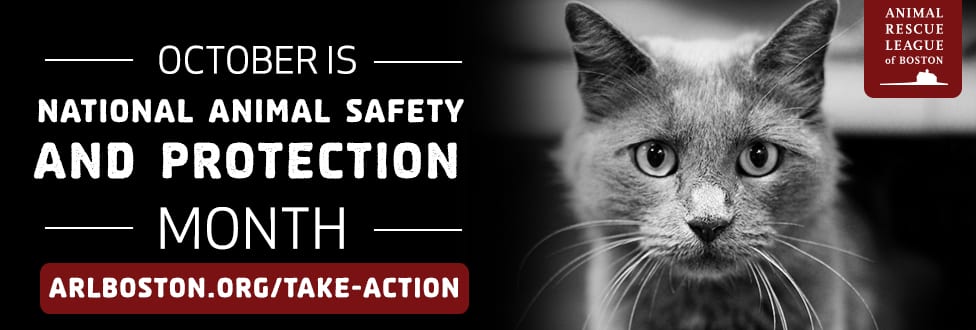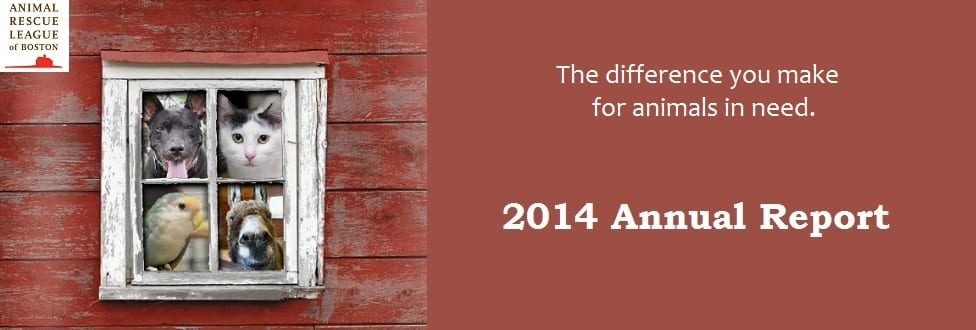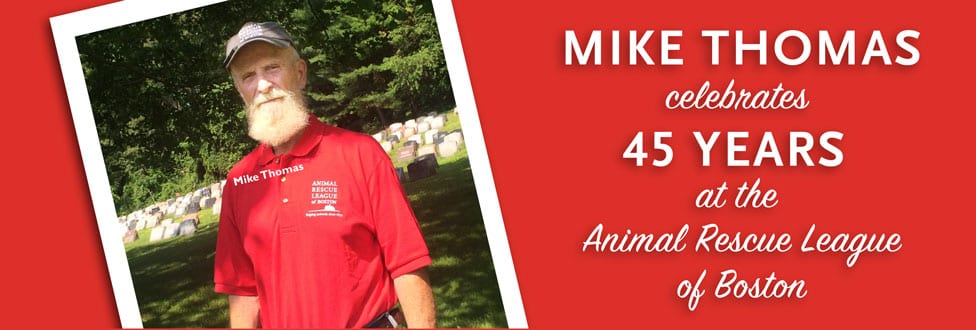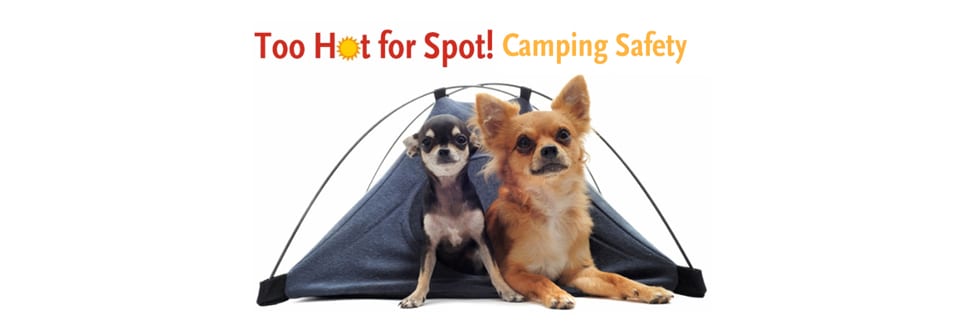DIY Dog Obstacle Course
Keep your pup in tip-top shape with this fun backyard activity
It’s National-Adopt-a-Dog month and the ARL is celebrating our beloved canine companions all October long! While summer presents us with natural opportunities to stay active with our pet, such as hiking and swimming, the fall weather often leaves us questioning how we can continue the outdoor fun.
The answer is simple and can actually be found in your own backyard: a DIY dog obstacle course! Inexpensive and easy to set up, a DIY dog obstacle course will keep Fido entertained and agile by challenging him both physically and mentally. An added bonus: it will help you and your pooch bond even more!
Is your dog a master of physical fitness? Keep things interesting by adjusting the level of difficulty or encouraging them to complete the course within a certain amount of time.

Placing treats inside the tunnel can help your pooch feel more comfortable when crawling through.
Gather your pup, some yummy treats, and a few basic supplies to get your dog maneuvering over, under, and through these 6 fun obstacles… READY, SET, BARK!
- Weave poles: Evenly space out about 10-12 traffic cones, poles, or flat markers and use a treat or toy to help Spot maneuver through. Increase the wooficulty: Slide the weave poles or markers closer together.
- Leave it: Scatter objects of temptation (extra tasty treats, a paper towel roll, an old shoe, etc.) around your yard. When your dog approaches an object, command them to “leave it”; if they look at you or walk away, immediately reward them with a treat. Increase the wooficulty: Try it without reward treats.
- Tunnel-through: Anchor a children’s flexible play tunnel and have your pooch crawl through. Decrease the wooficulty: A tunnel can be a dark, scary environment! Place treats every 6-12” inside the tunnel and ask a second person to stand on the opposite end to call your pet’s name.
- Hurdle jump: Place a PVC pipe on top of a couple of cement blocks and direct Rover to hop over. Increase the wooficulty: Turn the cement blocks vertically or add another set to raise the height.
- Doggie catwalk: Place a 2×4” plank of wood on top if cement blocks (make sure it’s sturdy!) and have Fido walk carefully across the plank. Decrease the wooficulty: Place the plank of wood on the ground and see if your pup can walk a straight line.
- Tire jump: Hang an old bike tire from a sturdy tree branch so that it’s a couple of inches off the ground and direct your dog to jump through it. Increase the wooficulty: Raise the tire another couple of inches.
DID YOU KNOW… that pet obesity is the #1 health problem for pets in the US? Boston Veterinary Care shares 5 tips on how to manage your pet’s weight.
A big thank you to our Adopt-a-Dog month media sponsor CITYSIDE SUBARU and to our media partners WCVB TV 5 and MeTV for sharing the importance of dog adoptions with our community, and your viewers!
